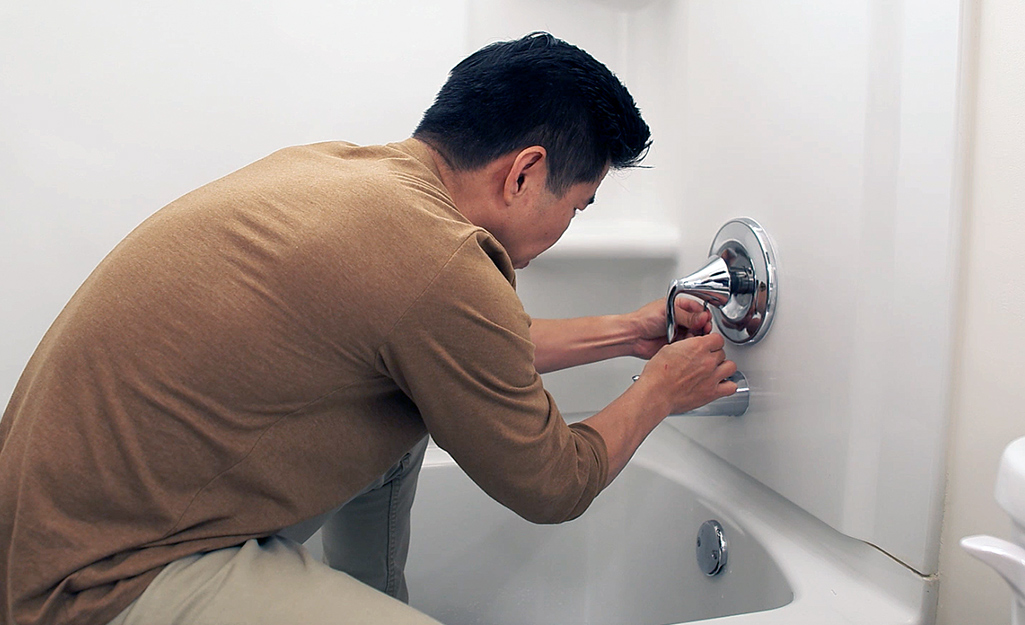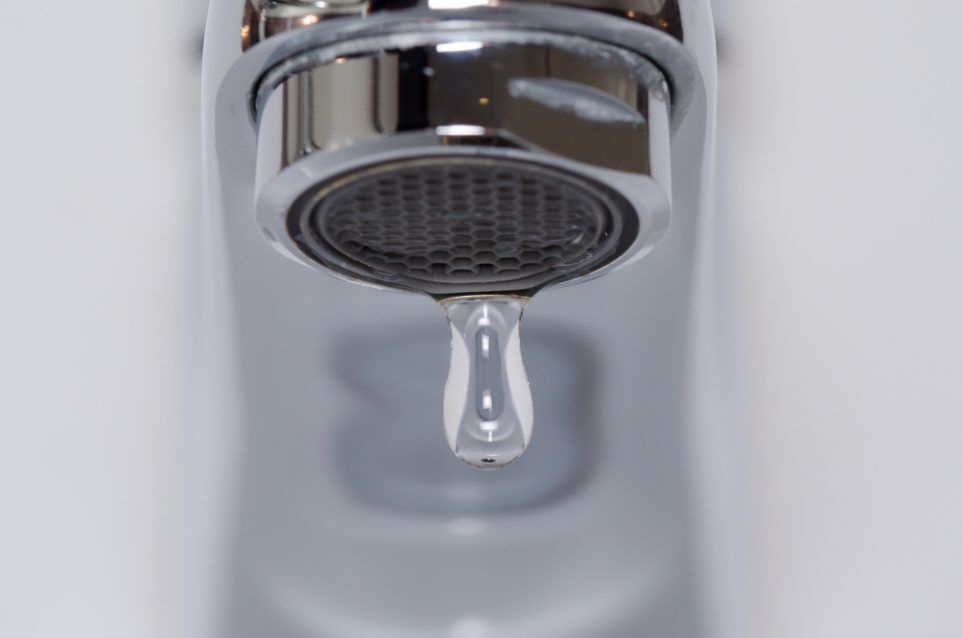Discovering the Importance of Repairing a Leaking Faucet
Discovering the Importance of Repairing a Leaking Faucet
Blog Article
The author is making a few good annotation regarding How to Fix a Dripping or Leaky Faucet in general in the content in the next paragraphs.

Trickling faucets might appear like a small inconvenience, yet their influence surpasses simply the annoyance of the audio. From drainage to incurring unneeded financial expenses and health threats, disregarding a trickling tap can result in numerous consequences. In this post, we'll delve into why it's vital to address this typical family problem promptly and efficiently.
Wastefulness of Water
Ecological Influence
Trickling faucets contribute substantially to water waste. According to the Epa (EPA), a solitary tap trickling at one drip per secondly can throw away greater than 3,000 gallons of water each year. This not just pressures water sources however likewise impacts environments and wildlife dependent on them.
Step-by-Step Guide to Dealing With a Dripping Tap
Tools Required
Prior to attempting to deal with a trickling faucet, gather the essential tools, including a flexible wrench, screwdrivers, replacement parts (such as washers or cartridges), and plumber's tape.
Typical Tap Issues and Their Solutions
Identify the type of faucet and the details problem creating the drip. Common troubles include worn-out washing machines, corroded valve seats, or damaged O-rings. Refer to maker guidelines or online tutorials for detailed guidance on fixings.
Financial Expenses
Boosted Water Costs
Past the ecological impact, dripping faucets can inflate water bills significantly. The collected waste over time translates into higher energy expenditures, which can have been avoided with prompt repairs.
Potential Property Damages
Additionally, long term leaking can cause damage to fixtures and surface areas surrounding the tap. Water buildup can create discoloration, deterioration, and also architectural concerns if left neglected, leading to extra repair prices.
Health and wellness Problems
Mold And Mildew and Mildew Development
The constant visibility of moisture from a leaking tap develops a suitable environment for mold and mildew development. These fungis not just jeopardize interior air quality however also position health dangers, particularly for individuals with respiratory system conditions or allergic reactions.
Waterborne Illness
Stagnant water in leaking faucets can end up being a breeding ground for bacteria and various other pathogens, boosting the risk of waterborne illness. Pollutants such as Legionella germs thrive in stagnant water, potentially resulting in significant diseases when consumed or breathed in.
DIY vs. Expert Repair work
Benefits and drawbacks of DIY Fixing
While some might attempt to repair a trickling faucet themselves, do it yourself repair work feature their very own collection of challenges. Without appropriate expertise and devices, DIY attempts can intensify the problem or result in incomplete repair services, extending the issue.
Benefits of Hiring an Expert Plumber
Employing a specialist plumber makes certain that the underlying reason for the trickling tap is resolved effectively. Plumbing professionals possess the competence and devices to diagnose and fix tap problems efficiently, saving time and minimizing the danger of further damage.
Ecological Obligation
Specific Contribution to Preservation
Taking duty for repairing trickling taps aligns with wider initiatives towards water preservation and environmental sustainability. Every individual's actions jointly make a considerable effect on maintaining priceless sources.
Lasting Living Practices
By focusing on punctual fixings and taking on water-saving practices, individuals contribute to lasting living techniques that profit both existing and future generations.
Preventive Measures
Normal Upkeep Tips
To avoid leaking faucets, perform regular maintenance such as cleaning aerators, inspecting for leakages, and replacing worn-out components quickly. Additionally, take into consideration mounting water-saving gadgets or updating to a lot more efficient components.
Significance of Prompt Services
Attending to dripping taps as quickly as they're observed protects against further water waste and possible damage, ultimately saving both water and cash in the future.
Impact on Property Value
Understanding of Well-Maintained Property
Maintaining a building in good condition, consisting of addressing maintenance issues like leaking faucets, enhances its perceived value and desirability amongst possible customers or occupants.
Impact on Resale Value
Residences with well-kept plumbing components, consisting of faucets, command higher resale worths in the real estate market. Attending to leaking faucets can add to a favorable impression during property evaluations and settlements.
Final thought
Addressing a leaking faucet goes beyond mere comfort; it's a necessary step toward preserving water, decreasing economic costs, and securing health and wellness and building. Whether through DIY fixings or specialist assistance, acting to repair leaking faucets is a little yet impactful method to advertise accountable stewardship of sources and contribute to a healthier, more sustainable future.
How to Fix a Dripping or Leaky Faucet
A leaking faucet is one of the most common problems that homeowners encounter, but it being commonplace doesn’t make it any less annoying. The constant drip drip drip of a leaking bathtub faucet, showerhead, or sink tap can disturb your home’s serenity. Left neglected, a dripping faucet can also result in higher water bills and discoloration or mold growth in your sink or plumbing fixtures.
Fortunately, you don’t have to be a trained plumber to know how to stop a dripping faucet. With some basic tools, replacement parts, and a little patience, leaky faucet repair is a breeze. In this article, we’ll explain what causes dripping faucets and how you can fix them.
What Causes a Leaking Faucet?
Kitchen and bathroom faucets come in all manner of designs, but most involve some combination of valves, O-rings, seals, and washers. The O-ring is usually the weakest link, but any one of these pieces can wear down over time. Heat, moisture, temperature fluctuations, minerals, mold, and movement can contribute to warping and corrosion, breaking the watertight seal. This just comes with the territory of being a homeowner. Everything is always subject to wear and tear, and some component parts of your appliances and fixtures need to be replaced on occasion. At least replacement O-rings are cheap!
More rarely, dripping faucets can be a symptom of excessively high water pressure. Were this the case in your home, you would probably notice that the leak is not isolated to one faucet. Water pressure issues are harder to resolve on your own. We recommend contacting a professional plumber if you suspect your water pressure is too high.
How to Fix a Dripping Faucet
Pipe wrench or monkey wrench Allen wrench set Screwdrivers Old towel or rag Shut off the water.
Before you do anything, you need to turn off the water to keep from drenching your kitchen or bathroom. You should find a valve under the sink and against the wall. Once you’ve turned this valve, try turning the faucet on to confirm that the water source has been cut off.
If you can’t locate your local valve for the faucet you’re working on, you can always shut off the water to the house at the main valve. Of course, this will prohibit anyone from using the sinks, showers, or toilets while you’re working on the faucet that’s giving you trouble.
Plug or block the drain.
You’ll be disassembling the faucet and removing some small bits of hardware. Plug the drain with a stopper or rag to avoid the possibility of a small screw falling into your P-trap.
Take apart the faucet assembly.
There are several varieties of kitchen and bathroom faucets, each with its own manner of assembly. For detailed instructions on how to disassemble your faucet, you can refer to the fixture’s manual or contact the manufacturer. If you know whether you have a ball, disc, cartridge, or compression faucet, you can find detailed schematics online.
In general, you need to begin by removing the faucet handles. You might notice a small screw that you’ll need to remove with a screwdriver or Allen wrench. If you don’t see any visible securing hardware, it’s likely hidden under a decorative cap that can be unscrewed or popped off with flathead screwdriver.
Remove each piece methodically, consulting a schematic when necessary. Take notes or arrange the pieces in such a way to make it easier to correctly reassemble the faucet later.
Remove the cartridge.
Once you’ve removed the handles and securing hardware, you should be able to remove the valve cartridge or stem. Some cartridges will slide right out. Other faucet models will require you to loosen a nut with a pipe wrench before you can remove the valve stem.
Examine the exposed hardware.
With the cartridge or stem removed, inspect the component parts. Check the rubber O-rings for wear and tear. Also examine the seat washer for corrosion or other damage. These pieces are usually the responsible parties for a dripping faucet, but it’s worth inspecting the other component parts while you have the faucet disassembled.
Find replacement parts.
Once you’ve identified which faucet component has failed, find an identical replacement. Your local hardware store should have O-rings, seat washers, and other standard components in stock. If you have a luxury or uncommon faucet, you may have to contact the manufacturer for a replacement part.
It’s a good idea to take your old parts with you to the hardware store so you can compare them with the store’s inventory and be sure you’re purchasing the correct replacement.
Reassemble the faucet.
With your new parts in hand, reconstruct the faucet and handles. Don’t be tempted to overtighten screws or nuts. You might think this could create a better seal, but it can instead damage or bend a delicate part of the assembly and create a new problem for you.
Turn on the water and test the faucet.
The only thing left to do is test your work. Unplug the sink, turn the water back on, and try the faucet. Congratulate yourself on a job well done!
https://www.libertyhomeguard.com/how-to-fix-a-dripping-or-leaky-faucet/

We hope you enjoyed reading our topic about Leaky Faucets: Why They Happen & What to Do About Them. Thanks for finding the time to browse our article. Do you know about anybody else who is inquisitive about the topic? Please feel free to share it. Many thanks for your time. Kindly stop by our blog back soon.
Report this page